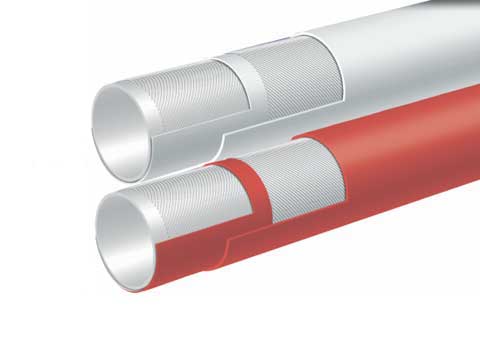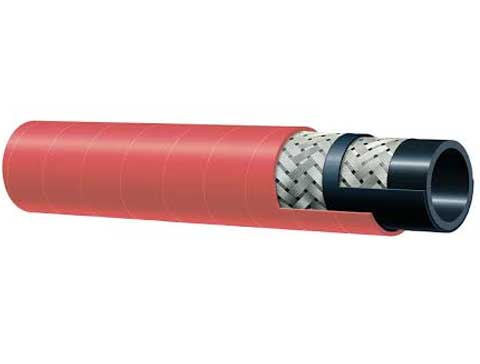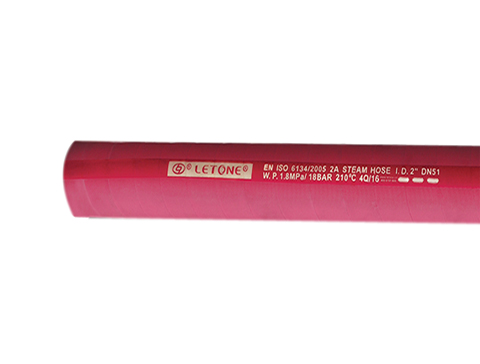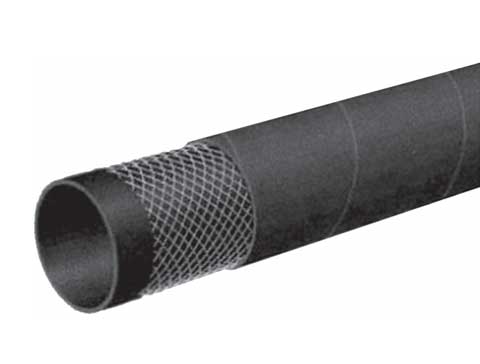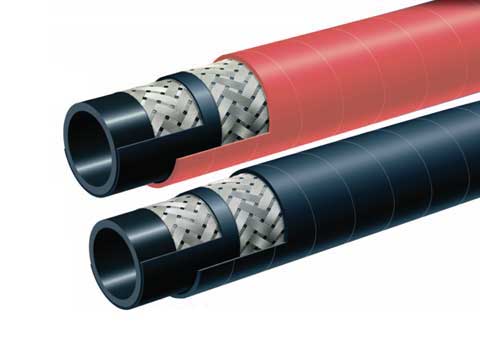Hydraulic hoses can be used in many industries to transfer fluid or pressurize fluid systems. Knowing the right hydraulic hose for your application can help ensure you get the job done safely and efficiently.
Hydraulic hoses are made to withstand high pressures and temperatures. However, improper selection or installation can shorten their lifespan and cause leakage.
Series of industrial hydraulic rubber hoses
The hydraulic rubber hose series for industrial use is suitable for petroleum- and water-based fluids. It can withstand temperatures up to 100 degrees Celsius and is available in single, double or triple braided steel wires.
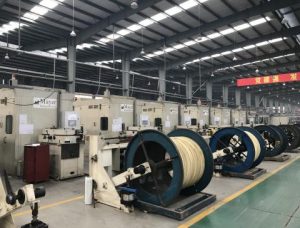 These hoses are popular in hydraulic-powered lift equipment as well as for lubrication lines that require a smaller outside diameter. They also have high abrasion resistance and can withstand harsh environments.
Hydraulic rubber hoses are manufactured from 3 layers: an inner synthetic rubber core, a 2-wire steel braid, and a rubber cover. The rubber covers are lightweight, abrasion-resistant and easy to manipulate.
The thermoplastic hydraulic hose is another type of hose. It uses two layers of polymer material, separated by a middle reinforcement layer. The outer layer is typically made from a synthetic rubber compound that is resistant to ozone, abrasion, and other chemicals.
Insulation sleeves can extend the life expectancy of a thermoplastic pipe by protecting it against extreme temperatures. Excessive exposure to hot equipment parts or other high-temperature sources can reduce a hose's service life by up to 80%.
Depending on the material used, acceptable internal temperatures range from -65 deg F (Hytrel and winterized rubber compounds) to 400 deg F (PTFE). Exposed to hot equipment parts or turbo manifolds, external temperatures can cause problems.
precautions for installation of hydraulic rubber hose
Hydraulic rubberhose is a common component of hydraulic and fluid-power equipment. It routes liquid between tanks, pumps, valves and other components to maintain a steady, consistent flow. It can withstand hundreds of thousands of pressure cycles without failure if properly selected, installed and maintained.
Hydraulic hoses typically have an inner tube of rubber or thermoplastic, which carries the liquid, and a cover that protects it from weather, oil, and ozone. They also have a reinforcement layer of sheath braided, spiral wound wire or textile-based yarn, which provides strength and supports the tubing.
But improper hose installation can lead to a variety of problems. These include reduced hose life and pinhole leaks, ruptured or damaged hoses, loss of hydraulic flow, damage to external parts, and damage to internal components.
Avoid twisting a hose or exceeding the minimum radius of bend when installing it. Twisting can cause the reinforcing layer to shift from its theoretical neutral angle, which will reduce the hose's carrying capacity.
When possible, route hydraulic lines parallel to machine contours. This helps prevent excessive flexing during pressure cycles and can help protect lines from internal damage.
In addition, be sure to inspect hoses regularly for deterioration and potential leaks. This can save money in the long run by preventing the need for hose replacement and preventive maintenance expenses.
media transmitted by hydraulic rubber hoses
Hydraulic hoses are used to transport hydraulic fluids to or from pumps, motors, valves and other system components. They are an integral part of the system and must be flexible and durable to work in high pressure and temperature environments.
Hydraulic hoses typically consist of an inner tube, one to three layers of reinforcement and an outer cover. Each component must be selected with the intended application in mind to provide a safe, reliable and long-lasting solution.
In addition, the hose's tube compound, cover and fittings must be chemically compatible with the fluid being transported. This will vary depending on the fluid type, concentration, temperature, and contamination.
Petroleum-based hydraulic oil, for example, can be transported using most rubber hoses. Synthetic oils require special materials. Other common media include water emulsion of mineral and hydraulic oils, fuel (excluding gasoline) and greases or gases.
Hydraulic hoses can be classified according to the working pressure into low-pressure or high-pressure types. To support higher pressure, high-pressure types can be reinforced with braided textile, wire, or spiral wire.
These hoses are popular in hydraulic-powered lift equipment as well as for lubrication lines that require a smaller outside diameter. They also have high abrasion resistance and can withstand harsh environments.
Hydraulic rubber hoses are manufactured from 3 layers: an inner synthetic rubber core, a 2-wire steel braid, and a rubber cover. The rubber covers are lightweight, abrasion-resistant and easy to manipulate.
The thermoplastic hydraulic hose is another type of hose. It uses two layers of polymer material, separated by a middle reinforcement layer. The outer layer is typically made from a synthetic rubber compound that is resistant to ozone, abrasion, and other chemicals.
Insulation sleeves can extend the life expectancy of a thermoplastic pipe by protecting it against extreme temperatures. Excessive exposure to hot equipment parts or other high-temperature sources can reduce a hose's service life by up to 80%.
Depending on the material used, acceptable internal temperatures range from -65 deg F (Hytrel and winterized rubber compounds) to 400 deg F (PTFE). Exposed to hot equipment parts or turbo manifolds, external temperatures can cause problems.
precautions for installation of hydraulic rubber hose
Hydraulic rubberhose is a common component of hydraulic and fluid-power equipment. It routes liquid between tanks, pumps, valves and other components to maintain a steady, consistent flow. It can withstand hundreds of thousands of pressure cycles without failure if properly selected, installed and maintained.
Hydraulic hoses typically have an inner tube of rubber or thermoplastic, which carries the liquid, and a cover that protects it from weather, oil, and ozone. They also have a reinforcement layer of sheath braided, spiral wound wire or textile-based yarn, which provides strength and supports the tubing.
But improper hose installation can lead to a variety of problems. These include reduced hose life and pinhole leaks, ruptured or damaged hoses, loss of hydraulic flow, damage to external parts, and damage to internal components.
Avoid twisting a hose or exceeding the minimum radius of bend when installing it. Twisting can cause the reinforcing layer to shift from its theoretical neutral angle, which will reduce the hose's carrying capacity.
When possible, route hydraulic lines parallel to machine contours. This helps prevent excessive flexing during pressure cycles and can help protect lines from internal damage.
In addition, be sure to inspect hoses regularly for deterioration and potential leaks. This can save money in the long run by preventing the need for hose replacement and preventive maintenance expenses.
media transmitted by hydraulic rubber hoses
Hydraulic hoses are used to transport hydraulic fluids to or from pumps, motors, valves and other system components. They are an integral part of the system and must be flexible and durable to work in high pressure and temperature environments.
Hydraulic hoses typically consist of an inner tube, one to three layers of reinforcement and an outer cover. Each component must be selected with the intended application in mind to provide a safe, reliable and long-lasting solution.
In addition, the hose's tube compound, cover and fittings must be chemically compatible with the fluid being transported. This will vary depending on the fluid type, concentration, temperature, and contamination.
Petroleum-based hydraulic oil, for example, can be transported using most rubber hoses. Synthetic oils require special materials. Other common media include water emulsion of mineral and hydraulic oils, fuel (excluding gasoline) and greases or gases.
Hydraulic hoses can be classified according to the working pressure into low-pressure or high-pressure types. To support higher pressure, high-pressure types can be reinforced with braided textile, wire, or spiral wire.

